Hindustan Aeronautics Limited
 From Wikipedia - Reading time: 20 min
From Wikipedia - Reading time: 20 min
 | |
| Company type | Public |
|---|---|
| Industry | |
| Founded |
|
| Headquarters | , India[1] |
Key people | DK Sunil (Chairman & MD) |
| Products | |
| Revenue | |
| Total assets | |
| Total equity | |
| Owner | Government of India (71.65%)[3][4] |
Number of employees | 24,457 (March 2023)[5] |
| Website | hal-india |
Hindustan Aeronautics Limited (HAL) is an Indian public sector aerospace and defence company, headquartered in Bangalore (Bengaluru). Established on 23 December 1940, HAL is one of the oldest and largest aerospace and defence manufacturers in the world.[6] HAL began aircraft manufacturing as early as 1942 with licensed production of Harlow PC-5, Curtiss P-36 Hawk and Vultee A-31 Vengeance for the Indian Air Force.[6] HAL currently has 11 dedicated Research and development (R&D) centres and 21 manufacturing divisions under 4 production units spread across India.[6] HAL is managed by a board of directors appointed by the President of India through the Ministry of Defence, Government of India.[7] In 2024, the company was given Maharatna status.[8] HAL is currently involved in the designing and manufacturing of fighter jets, helicopters, jet engine and marine gas turbine engine, avionics, hardware development, spares supply, overhauling and upgrading of Indian military aircraft.[9]
The HAL HF-24 Marut fighter-bomber was the first indigenous fighter aircraft made in India.
History
[edit]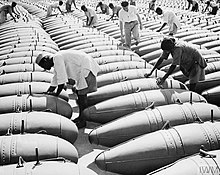
HAL was established as Hindustan Aircraft Limited in Bangalore on 23 December 1940 by Walchand Hirachand in association with Krishna Raja Wadiyar IV of Kingdom of Mysore.[10] Walchand Hirachand became chairman of the company. The company's office was opened at a bungalow called "Eventide" on Domlur Road.
The organisation and equipment for the factory at Bangalore was set up by William D. Pawley of the Intercontinental Aircraft Corporation of New York. Pawley obtained a large number of machine-tools and equipment from the United States.
The Mysore Kingdom bought a one-third stake in the company until April 1941 by investing ₹25 lakh as it believed this to be a strategic imperative. The decision by the government was primarily motivated to boost British military supplies in Asia to counter the increasing threat posed by Imperial Japan during Second World War. The Kingdom of Mysore supplied two directors, Air Marshal John Higgins was resident director. The first aircraft built was a Harlow PC-5.[11] On 2 April 1942, the government announced that the company had been nationalised when it bought out the stakes of Seth Walchand Hirachand and other promoters so that it could act freely. The Mysore Kingdom refused to sell its stake in the company but yielded the management control over to the British Indian Government.
In 1943 the Bangalore factory was handed over to the United States Army Air Forces but still using Hindustan Aircraft management. The factory expanded rapidly and became the centre for major overhaul and repair of American aircraft and was known as the 84th Air Depot. The first aircraft to be overhauled was a Consolidated PBY Catalina followed by every type of aircraft operated in India and Burma. When returned to Indian control two years later the factory had become one of the largest overhaul and repair organisations in the East. In the post war reorganisation the company built railway carriages as an interim activity.

After India gained independence in 1947, the management of the company was passed over to the Government of India.
The total number of broad-gauge coaches manufactured by the Hindustan Aircraft Limited during the year 1954 is 158. [12]
Hindustan Aeronautics Limited (HAL) was formed on 1 October 1964 (the Registrar of Companies has a registration date of 16 August 1963)[13] when Hindustan Aircraft Limited joined the consortium formed in June by the IAF Aircraft Manufacturing Depot, Kanpur (at the time manufacturing HS748 under licence) and the group recently set up to manufacture MiG-21 under licence, with its new factories planned in Koraput, Nasik and Hyderabad.[14] Though HAL was not used actively for developing newer models of fighter jets, except for the HF-24 Marut, the company has played a crucial role in modernisation of the Indian Air Force. In 1957, the company started manufacturing Bristol Siddeley Orpheus jet engines under licence at new factory located in Bangalore.
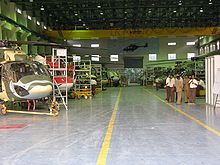
During the 1980s, HAL's operations saw a rapid increase which resulted in the development of new indigenous aircraft such as the HAL Tejas and HAL Dhruv. HAL also developed an advanced version of the Mikoyan-Gurevich MiG-21, known as MiG-21 Bison, which increased its life-span by more than 20 years. HAL has also obtained several multimillion-dollar contracts from leading international aerospace firms such as Airbus, Boeing and Honeywell to manufacture aircraft spare parts and engines.
By 2012, HAL was reportedly bogged down in the details of production and has been slipping on its schedules.[15] On 1 April 2015, HAL reconstituted its Board with TS Raju as CMD, S Subrahmanyan as Director (Operations), VM Chamola as Director (HR), CA Ramana Rao as Director (Finance) and D K Venkatesh as Director (Engineering & R&D). There are two government nominees in the board and six independent directors.

In March 2017, HAL's chairman and managing director T Suvarna Raju announced that the company had finalised plans for an indigenisation drive. The company plans to produce nearly 1, 000 military helicopters, including Kamov 226, LCH (Light Combat Helicopter) ALH (Advanced Light Helicopter), and over 100 planes over the next 10 years. HAL will manufacture the Kamov 226T helicopter under a joint venture agreement with Russian defence manufacturers. The Kamov 226T will replace the country's fleet of Cheetah and Chetak helicopters. Over the next 5 years, HAL will carry out major upgrades of almost the entire fighter fleet of the Indian Air Force, including Su-30MKI, Jaguars, Mirage and Hawk jets, to make them "more lethal". The company will also deliver 123 Tejas Light Combat Aircraft to the IAF from 2018 to 2019, at a rate of 16 jets per year.[16] LCH production will now take place in a newly built Light Combat Helicopter Production Hangar at Helicopter Division in HAL Complex.[17]
In view of Make in India policy and to increase the share of defence exports to achieve the target of $5 billion by 2025, HAL is planning to set up logistic bases in Indonesia, Malaysia, Sri Lanka and Vietnam with priority target for Southeast Asia, West Asia and North African markets. It would not only help to promote HAL products but also act as service centre for Soviet/Russian origin equipment.[18]
In October 2024, HAL was given Maharatna status, which allows the company to have more operational and financial autonomy.[19]
Operations
[edit]One of the largest aerospace companies in Asia, HAL has annual turnover of over US$3 billion. More than 40% of HAL's revenues come from international deals to manufacture aircraft engines, spare parts, and other aircraft materials. A partial list of major operations undertaken by HAL includes the following:
International agreements
[edit]

- US$1 billion contract to manufacture aircraft parts for Boeing.[20]
- 120 RD-33MK turbofan engines to be manufactured for MiG-29K by HAL for US$250 million.[21]
- Contract to manufacture 1,000 Honeywell TPE331 aircraft engines for Honeywell worth US$200,000 each (estimates put total value of deal at US$200 million).[22]
- US$120 million deal to manufacture Dornier 228 for RUAG of Switzerland.[23]
- Manufacture of aircraft parts for Airbus SAS worth US$150 million.[24]
- US$100 million contract to export composite materials to Israel Aerospace Industries.[25]
- US$65 million joint-research facility with Honeywell and planned production of Honeywell TPE331 engines.[26]
- US$50.7 million contract to supply Advanced Light Helicopter to Ecuadorian Air Force.[27] HAL will also open a maintenance base in the country.[28]
- US$30 million contract to supply avionics for Malaysian Su-30MKM.[29]
- US$20 million contract to supply ambulance version of HAL Dhruv to Peru.[30]
- Contract of 3 HAL Dhruv helicopters for Turkey worth US$20 million.[31]
- US$10 million order from Namibia for HAL Chetak and Cheetah helicopters.[32]
- Supply of HAL Dhruv helicopters to Mauritius' National Police in a deal worth US$7 million.[33]
- Unmanned helicopter development project with Israel Aerospace Industries.[34]
- US$15 million contract for supplying steel and nickel alloy forgings to GE Aviation for its global military and commercial engine programmes.[35]
Domestic agreements
[edit]- 221 Sukhoi Su-30MKI being manufactured at HAL's facilities in Nasik, Koraput and Bangalore. The total contract, which also involves Russia's Sukhoi Aerospace, is worth US$3.2 billion.
- 200 HAL Light Combat Helicopters for the Indian Air Force and 500 HAL Dhruv helicopters worth US$5.83 billion.
- US$900 million aerospace hub in Shamshabad, Telangana.[36]
- US$57 million upgrade of SEPECAT Jaguar fleet of the Indian Air Force.[37]
- US$55 million helicopter simulator training facility in Bangalore in collaboration with Canada's CAE.[38]
- 64 MiG-29s to be upgraded by HAL and Russia's MiG Corporation in a programme worth US$960 million.[39]
- Licensed production of 82 BAE Hawk 132.
Indigenous products
[edit]
Over the years, HAL has designed and developed several platforms like the HF-24 Marut,[40] the Dhruv,[41] the LUH,[42] and the LCH.[43] HAL also manufactures indigenous products with technology transferred from the DRDO, in association with Bharat Electronics for its avionics and Indian Ordnance Factories for the on-board weapons systems and ammunition.
HAL supplies ISRO, the integrated L-40 stages for GSLV Mk II, propellant tanks, feed lines of PSLV, GSLV MKII and GSLV MKIII launch vehicles and structures of various satellites.[44]
Agricultural aircraft
[edit]- HA-31 Basant (1972–1980) (out of production)
Fighter aircraft
[edit]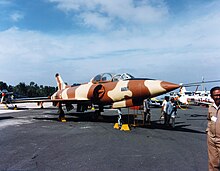
- HAL HF-24 Marut — (retired) Mk.1 and Mk.1T (200+ built)
- MBB/HAL HF-73 — (cancelled)
- HAL Tejas — (in service) 4.5 generation light combat aircraft (LCA)
- HAL Tejas MK2[45] — 4.5+ generation Medium weight fighter (under development) 2025 first flight expected.
- HAL TEDBF — Twin Engine Deck Based Fighter is 4.5+ generation fighter for Indian Navy's aircraft carriers (under development).[46] HAL ORCA version for IAF planned.
- Sukhoi/HAL FGFA — (cancelled) 5th generation fighter based on Sukhoi SU-57
- HAL AMCA
- Mk.1: 5th generation stealth fighter (under development)
- Mk.2: 5.5th generation stealth fighter ( it will operate in CATS {combat air teaming system}, a UCAV in the swarm will be equipped with a direct energy weapon) (planned).
Trainer aircraft
[edit]

- HT-2 — (1951–1990) First company design to enter production. Exported to Ghana. (retired)
- HAL-26 Pushpak — (1958 to ~1960s) Basic trainer, based on Aeronca Chief. (out of production)
- HJT-16 Kiran — (1964–1989) (in service) Mk1, Mk1A and Mk2 - Turbojet trainers scheduled to be replaced with HJT-36 Sitara[47]
- HPT-32 Deepak —(1984–2009) (retired) Basic trainer that was in service for more than three decades.
- HTT-34 — (retired) Turboprop version of HPT-32 Deepak
- HTT-35 (cancelled) — Proposed replacement for HPT-32 basic trainer in the early 1990s; not pursued
- HJT-36 Sitara — Intermediate jet trainer (under development)
- HJT 39 / CAT — Advanced jet trainer, developed into HLFT-42 (cancelled)
- HTT-40 — Basic trainer (in production)[48] first prototype flew its first flight on 31 May 2016.[49]
- HLFT-42 — Proposed lead-in fighter trainer.[50]
Passenger, transport and utility aircraft
[edit]
- Saras — of 14-19 seater capacity multi-purpose civilian light transport aircraft jointly developed with NAL.
- Indian Regional Jet (IRJ) — (under development) of 70-100 seater capacity regional airliner to be jointly developed with NAL.
Helicopters
[edit]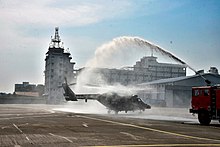


- Dhruv — (in production) Advanced light helicopter
- Rudra — (in production) Armed and reconnaissance version of Dhruv
- Prachand — (in production) Light attack helicopter
- Light Utility Helicopter — (in limited series production) Light utility helicopter
- Indian Multi Role Helicopter — (under development) medium multi-role helicopter. Includes naval version.
Observation and reconnaissance aircraft
[edit]- HAOP-27 Krishak (1959 to ~1975) (retired)— Based on HAL-26 Pushpak
Unmanned aerial vehicles
[edit]- PTA Lakshya — (Target drone)
- PTA Lakshya 2 — (Target drone)
- Rustom — UAV family
- Rustom-1 — Short Range UAV TD
- Archer — Short Range UAV
- SRUAV-W — Short Range UCAV
- Archer-NG
- Rustom-H — MALE UAV TD
- TAPAS-BH-201 — MALE UAV
- Nishant — Reconnaissance UAV
- NRUAV — Unmanned rotorcraft
- HAL Combat Air Teaming System (CATS)[51][52]
- CATS Mothership for Air teaming Exploitation (MAX) — based on Tejas Mark 1A or SEPECAT Jaguar
- CATS Warrior
- CATS Air Launched Flexible Assets (ALFA) — Unmanned carrier and launcher of weaponized swarm drone ALPHA-S.[53]
- CATS Hunter — Modular multi-purpose weapon carrying system
- CATS Infinity — High altitude solar powered atmospheric satellite[54]
Gliders
[edit]- G-1 — HAL's first original design, dating from 1941. Only one was built.
- RG-1 Rohini
- Ardhra — training glider
Engines
[edit]
Cryogenic Rocket Engine
[edit]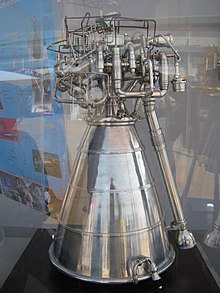
- CE-7.5 — cryogenic rocket engine (in production, used on GSLV Mk.II Cryogenic upper stage CUS15)
- CE-20 — cryogenic rocket engine[55] (in production, used on C25 upperstage of LVM-3)
Turboshaft Engine
[edit]- Shakti — a turboshaft engine for HAL Dhruv Helicopter, co-developed with Safran Helicopter Engines based on Safran Ardiden 1 ( in production and used on LUH, Dhruv, Rudra, Prachand )
- HTSE-1200 — a turboshaft engine can be used as engine alternatives for the HAL-developed LUH, Dhruv, Rudra and Prachand helicopters[56] (under development)
Turbojet Engine
[edit]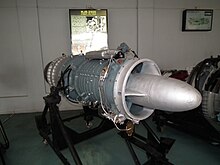
- Hindustan Jet Engine (HJE-2500) (retired)[57]
- PTAE-7 — (in service) For indigenously designed Lakshya PTA
Turbofan Engine
[edit]- GTX-35VS Kaveri — a turbofan engine can be used in HAL-developed Tejas and AMCA, co-developed with GTRE of (DRDO) and Safran Aircraft Engines (under development)
- HTFE-25 — a turbofan engine can be used in single engine trainer jets, business jets and UAVs weighing up to 5 tonnes and in twin engine configuration for same weighing up to 9 tonnes[58] (under development)
Licensed production
[edit]Fighter aircraft
[edit]
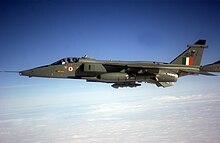
- De Havilland Vampire — (retired) first combat jet manufactured by HAL, 250+ FB.52, 60 T.55 models[59]
- Folland Gnat — (retired) Over 175 manufactured by HAL.
- HAL Ajeet —(retired) improved version of the Folland Gnat, 89 manufactured by HAL
- Mikoyan-Gurevich MiG-21 —(Out of production) FL, M, Bis and UPG upgrades variants 660 manufactured in Aircraft Manufacturing Division, Nasik
- Mikoyan-Gurevich MiG-27 —(retired) A total of 150 ML variant were manufactured in Aircraft Manufacturing Division, Nasik
- SEPECAT Jaguar — (Out of production) IS, IB and IM variants (89 IS, 27 IB and 12 IM variants built)
- Sukhoi Su-30MKI — (In Service) a derivative of the Sukhoi Su-30 (272 delivered, 12 on order). Manufactured in Aircraft Manufacturing Division, Nasik
Trainer aircraft
[edit]- Harlow PC-5 — first aircraft assembled by HAL
- Percival Prentice — 66 built by HAL
- BAE Hawk Mk 132 — The type and its engines are produced under license in Aircraft Division Bangalore, proposed to be developed into Hawk-i fighter - trainer aircraft.[60]
Passenger, transport and utility aircraft
[edit]- HS 748 Avro — (being retired) modified for military usage, includes Series 2M variant with large freight door. Produced at Transport Aircraft Division, Kanpur.
- Dornier 228 — (under production) 117 built with additional fuselage, wings and tail unit for production of the upgraded Dornier 228 NG variant. Sometimes referred to as HAL 228. Several variants including Maritime Surveillance and Utility version under production in at Transport Aircraft Division.
Helicopters
[edit]- Aerospatiale SA 315B Lama — HAL Cheetah, Lancer, Cheetal Variants
- Aerospatiale SA 316B Alouette III — HAL Chetak, Chetan Variants
Engines
[edit]Turbofan Engines
[edit]- Rolls-Royce Turbomeca Adour Mk 811 — Engine for SEPECAT Jaguar, produced under licence in Engine Division Bangalore
- Rolls-Royce Turbomeca Adour Mk 871 — Engine for BAE Hawk Mk 132, produced under licence in Engine Division Bangalore
- Garrett TPE331-5 — Engine for Dornier 228, produced under licence in Engine Division Bangalore
- Saturn AL-31FP — Engine for Sukhoi Su-30MKI, produced under licence in Sukhoi Engine Division Koraput
- Klimov RD-33MK — Engine for Mikoyan MiG-29, produced under licence in Engine Division Koraput
- Tumansky R-25 — Engine for Mikoyan-Gurevich MiG-21, produced under licence in Engine Division Koraput
- F414-GE-INS6 — Engine for HAL Tejas Mk2, HAL TEDBF and HAL AMCA Mk1, negotiations for licensed production underway. Production in new facility in Bangalore.[61]
Turboshaft Engine
[edit]- Turbomeca TM 333 — Engine for HAL Dhruv Mk 1/2 and HAL Cheetal, produced under licence in Engine Division Bangalore
Notable people
[edit]- Kota Harinarayana (b. 1943), president of the Aeronautical Society of India and chief designer of HAL Tejas
- Kurt Tank (1898–1983), German aeronautical engineer, designed Hindustan Marut fighter-bomber
- Roddam Narasimha (1933–2020), aerospace scientist and fluid dynamicist
- Vishnu Madav Ghatage (1908–1991), one of the pioneers of Indian aeronautics
See also
[edit]- HAL Aerospace Museum
- Pragati Aerospace Museum
- Defence Research and Development Organisation
- HAL Airport
- Indian Space Research Organisation
- Central Aircraft Manufacturing Company
- Hindustan Aeronautics Limited SC
- National Aerospace Laboratories
- Mahindra Aerospace
- Tata Advanced Systems
- Aeronautical Development Agency
- HAL SC
References
[edit]- ^ PTI (27 February 2020). "India's annual defence exports to touch Rs 1,05,000 cr by 2025, says Rajnath Singh". Business Line. Press Trust of India. Archived from the original on 14 March 2020. Retrieved 12 March 2020.
- ^ a b c d e "HAL Financial 2024" (PDF). Retrieved 16 May 2024.
- ^ "Hindustan Aeronautic Shareholding". economictimes.indiatimes.com. Archived from the original on 29 January 2022. Retrieved 29 January 2022.
- ^ "Latest Shareholding Pattern - Hindustan Aeronautics Ltd". trendlyne.com. Archived from the original on 14 August 2021. Retrieved 7 August 2020.
- ^ "Annual Report - 2012-23" (PDF). Hindustan Aeronautics Limited. Retrieved 3 September 2021.
- ^ a b c "Our History". Hindustan Aeronautics Limited. Archived from the original on 16 April 2021. Retrieved 27 March 2021.
- ^ "Corporate Governance". Hindustan Aeronautics Limited. Archived from the original on 7 May 2021. Retrieved 9 May 2021.
- ^ Manohar, Asit (12 October 2024). "HAL becomes 14th Maharatna company in India. Check full list". Mint. Retrieved 15 October 2024.
- ^ "HAL Exports". Hindustan Aeronautics Limited. Archived from the original on 12 May 2021. Retrieved 9 May 2021.
- ^ "History of HAL". Hindustan Aeronautics Limited. Archived from the original on 16 April 2021. Retrieved 27 March 2021.
- ^ "Archived copy" (PDF). Archived from the original on 10 May 2013. Retrieved 3 January 2012.
{{cite web}}: CS1 maint: archived copy as title (link) CS1 maint: bot: original URL status unknown (link) Flight 27 August 1954 p. 296. - ^ "Lok Sabha Debates, Written Questions and Answers, Lok Sabha Secretariat, New Delhi" (PDF). 23 March 1955. p. 26. Archived (PDF) from the original on 12 April 2020. Retrieved 12 April 2020.
- ^ "HINDUSTAN AERONAUTICS LIMITED". Zauba Corp. Archived from the original on 20 September 2022. Retrieved 19 September 2022.
- ^ "Archived copy". Archived from the original on 9 March 2012. Retrieved 8 May 2013.
{{cite web}}: CS1 maint: archived copy as title (link) CS1 maint: bot: original URL status unknown (link) Flight International 1964 - ^ "Business Line : Companies News : 'HAL slipping up on deliveries as it handles too many projects'". Archived from the original on 7 March 2012. Retrieved 4 March 2012.
{{cite web}}: CS1 maint: bot: original URL status unknown (link) The Hindu Business Line, 3 March 2012. - ^ "Narendra Modi powers-up HAL's indigenisation drive, India's military may get 100 planes, 1,000 helicopters soon". The Financial Express. 26 March 2017. Archived from the original on 27 March 2017. Retrieved 26 March 2017.
- ^ "Indigenous Light Combat Helicopter ready for operational induction: HAL". The New Indian Express. 27 February 2020. Archived from the original on 28 February 2020. Retrieved 28 February 2020.
- ^ "HAL eyes bases in four nations to push 'made-in-India' defence products". Livemint. 8 March 2020. Archived from the original on 30 August 2022. Retrieved 11 March 2020.
- ^ "HAL's Maharatna Status: India's Growth Towards Aerospace Industry". Press Information Bureau. 14 October 2024. Retrieved 15 October 2024.
- ^ "Boeing to export up to $1 billion in work to India". TheNewsTribune.com.[permanent dead link]
- ^ "India Signs Contract For $964M MiG-29 Upgrade". Aviation Week. 10 March 2008. Archived from the original on 21 May 2011. Retrieved 21 October 2010.
- ^ "HAL to make 1,000 Honeywell engines". The Financial Express. 30 May 2008. Archived from the original on 26 July 2009. Retrieved 21 October 2010.
- ^ "HAL to make new generation Dornier aircraft". Business Standard India. Archived from the original on 29 January 2009.
- ^ "National : HAL bags $150-million Airbus order". The Hindu. 19 March 2008. Archived from the original on 16 January 2011. Retrieved 21 October 2010.
- ^ "Israel News : Israel outsources $100-mn composites for UAVs to India". Israelenews.com. Archived from the original on 13 July 2011. Retrieved 21 October 2010.
- ^ "Honeywell opens $65m R&D facility in Bangalore". Pacetoday.com.au. 11 May 2009. Retrieved 21 October 2010.[permanent dead link]
- ^ "Hindustan Aeronautics gets $50.7 mln helicopter contract from Ecuador air force". Forbes. 26 June 2008. Archived from the original on 4 June 2011. Retrieved 21 October 2010.
- ^ "HAL to have maintenance base in Ecuador". The Economic Times. Economictimes.indiatimes.com. 7 September 2008. Archived from the original on 11 September 2008. Retrieved 21 October 2010.
- ^ "TajaNews". TajaNews. Retrieved 21 October 2010.[permanent dead link]
- ^ "HAL secures order for ambulance version of ALH Dhruv from Peru". domain-b.com. 24 June 2008. Archived from the original on 18 May 2011. Retrieved 21 October 2010.
- ^ "HAL bags $20 million contract for supply of three Dhruv helicopters to Turkey". domain-b.com. 12 August 2008. Archived from the original on 18 May 2011. Retrieved 21 October 2010.
- ^ "HAL bags $10 mn order for Chetak, Cheetah from Namibia". The Economic Times. Economictimes.indiatimes.com. 10 June 2009. Archived from the original on 28 August 2017. Retrieved 21 October 2010.
- ^ PTI (1 March 2009). "India signs pact for supply of Dhruv helicopters to Mauritius". The Times of India. Archived from the original on 23 October 2012. Retrieved 21 October 2010.
- ^ PTI (2 April 2008). "'India, Israel developing unmanned helicopter' -Gulf-World". The Times of India. Archived from the original on 21 October 2012. Retrieved 21 October 2010.
- ^ Urs, Anil (4 February 2021). "HAL hopes to fly high with CATS Warrior and RUAV drones". Business Line. Retrieved 30 March 2021.
- ^ "India to construct new aerospace hub". Itexaminer.com. 16 October 2008. Archived from the original on 13 July 2011. Retrieved 21 October 2010.
- ^ "HAL to upgrade Indian Jaguar fleet". Flightglobal.com. Archived from the original on 20 May 2011. Retrieved 21 October 2010.
- ^ PTI (16 August 2007). "Hindustan Aeronautics to set up pilot training school-India Business-Business-The Times of India". The Times of India. Archived from the original on 21 October 2012. Retrieved 21 October 2010.
- ^ "India awards Russia billion dollar MiG-29 upgrade". AFP News Agency. 10 March 2008. Archived from the original on 13 May 2013. Retrieved 3 September 2021.
- ^ "Hindustan Aeronautics Ltd. HF-24 Mk 1 Marut". Deutsches Museum. Archived from the original on 15 February 2021. Retrieved 3 September 2021.
- ^ "DHRUV". Hindustan Aeronautics Limited. Archived from the original on 16 March 2023. Retrieved 3 September 2021.
- ^ "LUH". Hindustan Aeronautics Limited. Archived from the original on 24 November 2020. Retrieved 3 September 2021.
- ^ "LCH". Hindustan Aeronautics Limited. Archived from the original on 22 October 2021. Retrieved 3 September 2021.
- ^ "ISRO's most reliable partner HAL delivers 'Made in India' L-40 stage for GSLV-MKII". The Financial Express. 28 February 2020. Archived from the original on 29 February 2020. Retrieved 29 February 2020.
- ^ "INTERVIEW | Youngsters can power India into a defence technology leader: Dr Satheesh Reddy". OnManorama. Archived from the original on 30 August 2022. Retrieved 24 August 2022.
- ^ Richardson, Jack (4 June 2020). "Indian Government Approval for TEDBF". European Security & Defence. Archived from the original on 5 July 2020. Retrieved 5 July 2020.
- ^ "India's HJT-36 Sitara conducts successful test flight after three-year hiatus | Jane's 360". www.janes.com. Archived from the original on 24 April 2019. Retrieved 12 March 2020.
- ^ "Parrikar: 68 basic trainer aircraft to come from HAL, 38 from Pilatus". The Indian Express. 1 March 2015. Archived from the original on 1 March 2015.
- ^ "HAL-built HTT-40's first flight successful". www.oneindia.com. 31 May 2016. Archived from the original on 1 June 2016. Retrieved 1 June 2016.
- ^ Thakur, Aksheev (13 February 2023). "HLFT-42 to transform training of Indian Air Force pilots: HAL officials". The Indian Express. Archived from the original on 14 February 2023. Retrieved 14 February 2023.
- ^ Parakala, Akshara (5 February 2021). "Aero India 2021: HAL's loyal wingmen break cover". Janes. Archived from the original on 7 June 2021. Retrieved 15 February 2021.
- ^ Chandra, Atul (4 February 2021). "HAL unveils ambitious air-teaming system centred on Tejas". Flight Global. Archived from the original on 3 June 2021. Retrieved 15 February 2021.
- ^ Kadidal, Akhil (20 October 2019). "Bengaluru startup, HAL team-up for drone battle". Deccan Herald. DHNS. Archived from the original on 11 April 2021. Retrieved 15 February 2021.
- ^ Som, Vishnu (4 February 2021). "New Indian Drone Can Soar For 90 Days, Coordinate Attacks". NDTV. Archived from the original on 10 February 2021. Retrieved 15 February 2021.
- ^ "HAL to produce cryogenic engines for ISRO". Archived from the original on 9 May 2021. Retrieved 9 May 2021.
- ^ Our Bureau (20 December 2015). "A long way to go for HAL's new aircraft engine". The Hindu Business Line. Archived from the original on 3 October 2016.
- ^ "Aero Engine". Hindustan Aeronautics Limited. Retrieved 13 March 2024.
- ^ ECONOMICTIMES.COM (14 December 2015). "Boost for 'Make in India': HAL's 25 kN aero engine completes inaugural run; can be used for trainer aircraft". The Economic Times. Economictimes.indiatimes.com. Archived from the original on 14 July 2016. Retrieved 24 July 2016.
- ^ "History of IAF". Indian Air Force. 11 November 2017. Archived from the original on 9 April 2009.
- ^ Desk, EurAsian Times (22 April 2021). "Indian Air Force's Hawk-i Trainer Jet Is Now Equipped With Deadly ASRAAM Missile". Latest Asian, Middle-East, EurAsian, Indian News. Retrieved 13 March 2024.
{{cite web}}:|last=has generic name (help) - ^ Pubby, Manu (10 August 2024). "Technical, price bids submitted in fighter jet engine deal with US". The Economic Times. ISSN 0013-0389. Retrieved 12 August 2024.
 KSF
KSF